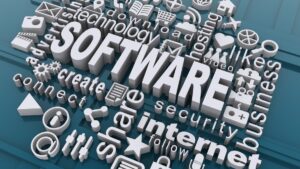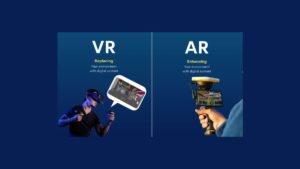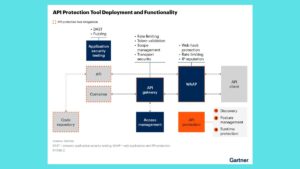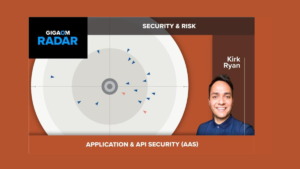HR Tech Trends Shaping the Future of Work in 2024

The rapid evolution of technology has transformed the way HR professionals manage talent, enhance employee experiences, and drive business success. As organizations seek to navigate an increasingly digital workplace, human resources (HR) technology has become a critical tool for attracting, retaining, and engaging top talent. The HR tech landscape in 2024 is witnessing groundbreaking innovations—from AI-powered solutions to data-driven talent management—that are reshaping the future of work.
In this blog, we’ll explore the key HR tech trends that are transforming the industry and how they’re impacting organizations around the world.
1. Artificial Intelligence (AI) in Talent Acquisition
Artificial intelligence (AI) is revolutionizing recruitment and talent acquisition by automating many manual processes, making hiring faster, more efficient, and less prone to human bias. AI-powered tools can now screen resumes, match candidates to job roles, and even conduct initial interviews using chatbots or virtual assistants.
Key AI Applications in HR:
- AI-Powered Candidate Screening: AI can scan and analyze resumes to identify top candidates based on predefined criteria, reducing the time HR teams spend on manual resume reviews.
- Predictive Analytics for Hiring Success: AI uses data to predict which candidates are most likely to succeed in a given role, helping recruiters make data-driven hiring decisions.
- Chatbots for Candidate Engagement: Chatbots can interact with candidates to answer common questions, schedule interviews, and even conduct pre-interview assessments.
Impact:
AI is enabling HR teams to make more informed hiring decisions while improving the candidate experience. By automating time-consuming tasks, recruiters can focus on strategic initiatives such as building relationships with candidates and fostering a diverse workforce.
2. Employee Experience Platforms
The employee experience is now a key focus for HR, and technology is playing a vital role in shaping that experience. Employee experience platforms (EXP) integrate various tools and services, from onboarding and performance management to feedback and wellness programs, into a seamless digital ecosystem. These platforms help create a more personalized, engaging, and connected work environment.
Key Features of EXPs:
- Personalized Learning and Development: EXPs offer employees personalized learning paths based on their role, skills, and career goals, making it easier for them to access relevant development opportunities.
- Real-Time Feedback: Continuous feedback tools enable employees and managers to exchange feedback regularly, fostering a culture of growth and development.
- Employee Well-being Programs: Many EXPs offer wellness features such as mental health resources, mindfulness training, and fitness challenges, helping employees stay healthy and engaged.
Impact:
By focusing on employee experience, organizations can increase engagement, productivity, and retention. Employee experience platforms also provide HR leaders with data-driven insights into employee satisfaction, enabling them to address issues before they impact performance.
3. People Analytics and Data-Driven HR
HR is becoming more data-driven, with people analytics playing a crucial role in shaping HR strategies and decision-making. People analytics leverages data to provide insights into workforce trends, talent performance, and employee engagement. It allows HR leaders to make evidence-based decisions that align with business goals and improve overall workforce management.
Key Applications of People Analytics:
- Predictive Turnover Models: People analytics can identify patterns in employee behavior that signal potential turnover, allowing HR teams to take proactive steps to retain talent.
- Talent Development Insights: Data can be used to track employee performance and identify skills gaps, enabling organizations to provide targeted training and development opportunities.
- Diversity and Inclusion Metrics: HR leaders can use data to measure progress toward diversity and inclusion goals, ensuring that hiring practices and workplace culture are equitable.
Impact:
People analytics helps HR leaders move beyond intuition-based decisions to data-driven strategies that improve talent acquisition, employee engagement, and organizational performance. It also empowers HR teams to measure the effectiveness of their initiatives in real time.
4. Automation in HR Processes
Automation is becoming a key enabler of efficiency and accuracy in HR processes, freeing HR teams from repetitive tasks and allowing them to focus on more strategic work. From onboarding and payroll management to compliance and benefits administration, automation is streamlining essential HR functions.
Key Automation Applications:
- Automated Onboarding: New hire onboarding processes, including document signing, training module completion, and benefits enrollment, can be automated, improving the employee experience and reducing administrative burden.
- Payroll and Benefits Management: Automation ensures accuracy in payroll processing, tax compliance, and benefits administration, reducing errors and saving time for HR teams.
- Compliance Management: HR technology can automate compliance-related tasks, such as tracking employee certifications, legal requirements, and policy updates.
Impact:
HR automation increases operational efficiency and reduces the likelihood of human error in critical processes. It also improves employee satisfaction by making routine processes faster and more seamless.
5. Hybrid Work and Remote Collaboration Tools
The shift to hybrid and remote work models has accelerated the adoption of collaboration and communication tools in HR. As organizations embrace flexible work arrangements, HR technology is evolving to support distributed teams, foster virtual collaboration, and maintain employee engagement in a remote environment.
Key Tools for Hybrid Work:
- Virtual Collaboration Platforms: Tools like Microsoft Teams, Slack, and Zoom enable employees to collaborate and communicate seamlessly, regardless of their location.
- Remote Employee Monitoring: HR tech solutions now offer features for monitoring remote employee productivity, tracking performance, and ensuring accountability in a virtual workspace.
- Virtual Onboarding: Remote onboarding platforms help new hires integrate into the company culture and get up to speed on their roles, even when working remotely.
Impact:
As hybrid work becomes the norm, HR technology will play a critical role in ensuring that employees remain connected, engaged, and productive, regardless of where they work. These tools also help HR teams build a cohesive organizational culture that supports remote employees.
6. Virtual Reality (VR) and Augmented Reality (AR) in Training
Virtual and augmented reality are making waves in the HR space, particularly in employee training and development. VR and AR technologies provide immersive learning experiences that can enhance employee skills, simulate real-world scenarios, and create engaging training environments.
Key Applications of VR/AR in HR:
- Immersive Employee Training: VR can simulate real-life job tasks, enabling employees to practice skills in a safe and controlled environment. This is particularly valuable for roles that involve high-risk or complex tasks, such as manufacturing or healthcare.
- Virtual Leadership Development: AR tools can create interactive scenarios that help managers develop leadership skills, such as conflict resolution, decision-making, and team management.
- Remote Collaboration Using AR: AR tools can allow employees to collaborate on projects in real-time, overlaying virtual objects or information onto the physical world to facilitate communication and problem-solving.
Impact:
VR and AR have the potential to revolutionize employee training by making it more interactive, engaging, and effective. As these technologies become more accessible, we can expect to see greater adoption across industries for various HR purposes.
7. Focus on Employee Well-being and Mental Health
Employee well-being has become a critical focus for HR leaders, and technology is playing an important role in supporting mental health and overall wellness in the workplace. HR tech solutions now offer a variety of tools to help employees manage stress, improve mental health, and maintain work-life balance.
Key Features of Well-being Platforms:
- Mental Health Resources: Apps and platforms that provide access to counseling services, mental health assessments, and mindfulness training are becoming essential tools for supporting employee well-being.
- Wellness Challenges and Programs: Many companies are using wellness platforms to offer fitness challenges, healthy living tips, and access to gym memberships, promoting physical health and well-being.
- Work-Life Balance Support: Technology can help HR leaders offer flexible work arrangements, time-off tracking, and digital detox tools that encourage employees to prioritize their mental health and avoid burnout.
Impact:
By leveraging technology to support employee well-being, HR leaders can create a more positive and productive workplace, reduce turnover, and improve employee engagement.
Conclusion
The future of HR is being shaped by rapid technological advancements that are transforming how organizations attract, manage, and retain talent. From AI-driven recruitment and people analytics to automation and immersive training experiences, HR technology is enabling more efficient processes and better decision-making. As organizations continue to navigate a digital-first, hybrid work environment, staying ahead of HR tech trends is crucial for HR leaders looking to drive innovation, improve employee engagement, and ensure long-term business success.
By embracing these HR tech trends, companies can build more agile, data-driven, and people-centric organizations that are well-equipped to thrive in the future of work.







